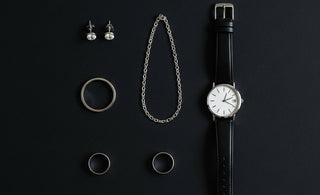
The art of choosing jewelry extends far beyond simply picking something that looks pretty. It involves understanding how different pieces work with your body type, skin tone, and personal aesthetic while considering practical factors like durability, maintenance, and versatility. When you master these selection principles, you'll build a jewelry collection that truly serves and represents you, filled with pieces you'll love wearing for years to come.
Understanding Your Personal Style
Before exploring specific jewelry options, it's crucial to understand your personal style preferences and how they translate into jewelry choices. Your style personality should guide every jewelry decision, ensuring that your pieces feel authentic and comfortable rather than like costumes you're wearing.
Classic and Timeless:
If you gravitate toward traditional, elegant pieces that never go out of style, focus on classic jewelry designs with clean lines and precious materials. Think pearl earrings, diamond studs, simple gold chains, and traditional wedding bands. These pieces work across decades and complement conservative, professional, or refined personal styles.
Modern and Minimalist:
Contemporary style enthusiasts often prefer sleek, geometric designs with clean lines and understated elegance. Look for pieces with simple shapes, negative space, and architectural elements. Thin bands, geometric pendants, and asymmetrical designs work well for this aesthetic.
Bohemian and Artistic:
Free-spirited individuals often gravitate toward unique, handcrafted pieces with organic shapes, natural materials, and cultural influences. Consider pieces with mixed metals, natural stones, intricate patterns, and artisanal craftsmanship that tell stories and reflect creativity.
Bold and Glamorous:
If you love making statements and aren't afraid to be noticed, embrace larger pieces, vibrant colors, and dramatic designs. Cocktail rings, chandelier earrings, and layered necklaces allow you to express your confident, outgoing personality.

Body Type and Proportion Considerations
Understanding how jewelry interacts with your body type helps you choose pieces that enhance your natural proportions and create the most flattering overall appearance.
Necklines and Necklaces:
Different necklace lengths work better with different necklines and body types. Chokers suit long necks and open necklines, while longer chains complement higher necklines and shorter necks. Princess-length necklaces (16-18 inches) work well for most people and necklines, making them versatile foundation pieces.
Face Shape and Earrings:
Your face shape influences which earring styles will be most flattering. Round faces benefit from longer, angular earrings that add length, while square faces look great with round or curved designs that soften angles. Heart-shaped faces work well with earrings that are wider at the bottom, while oval faces can wear almost any earring style successfully.
Hand and Finger Considerations:
Ring choices should complement your hand size and finger length. Larger hands can handle substantial rings, while smaller hands look better with more delicate pieces. Long fingers can wear wide bands and bold designs, while shorter fingers benefit from vertical elements and narrower bands.
Wrist Size and Bracelets:
Bracelet selection should consider your wrist size and arm proportions. Delicate wrists look overwhelmed by chunky bracelets, while substantial wrists can handle bolder pieces. Consider your arm length when choosing bracelet width and style.

Skin Tone and Metal Selection
Understanding your skin's undertones helps you choose metals and gemstone colors that enhance your natural coloring rather than competing with it.
Warm Undertones:
If you have warm undertones (yellow, peach, or golden), you'll typically look best in warm metals like yellow gold, rose gold, and copper. Gemstones in warm colors—such as citrine, amber, coral, and warm-toned pearls—will complement your natural coloring beautifully.
Cool Undertones:
Cool undertones (pink, red, or blue) pair beautifully with cool metals like white gold, platinum, and silver. Gemstones in cool colors—such as sapphires, emeralds, amethyst, and white pearls—will enhance your natural coloring.
Neutral Undertones:
Lucky individuals with neutral undertones can wear both warm and cool metals successfully. This flexibility allows for mixed-metal pieces and a broader range of gemstone colors.
Testing Your Undertones:
If you're unsure about your undertones, try holding different colored fabrics near your face or examining your wrist veins. Green veins typically indicate warm undertones, while blue or purple veins suggest cool undertones.
Lifestyle and Practicality Factors
Your daily activities, profession, and lifestyle should significantly influence your jewelry choices to ensure your pieces remain practical and appropriate for your routine.
Professional Considerations:
Different work environments have varying jewelry appropriateness levels. Conservative professional settings often require subtle, classic pieces, while creative industries may allow for more expressive choices. Consider your workplace culture and dress code when selecting daily wear jewelry.
Activity Levels:
Active lifestyles require durable, comfortable jewelry that won't interfere with movement or activities. Look for pieces with secure closures, smooth edges, and materials that can withstand regular wear and occasional impacts.
Maintenance Preferences:
Consider how much time and effort you're willing to invest in jewelry maintenance. Some pieces require regular cleaning and professional care, while others maintain their appearance with minimal attention.
Security Concerns:
Valuable pieces may not be appropriate for all situations or locations. Consider having both everyday pieces and special occasion jewelry to match different security comfort levels.
Budget Planning and Value Considerations
Developing a strategic approach to jewelry budgeting helps ensure you make purchases that provide lasting satisfaction and value.
Investment vs. Fashion Pieces:
Distinguish between investment pieces that should last decades and fashion pieces that reflect current trends. Allocate larger budgets to timeless, high-quality pieces while keeping fashion jewelry spending more modest.
Quality Indicators:
Learn to recognize quality markers in different jewelry categories. For metals, look for proper hallmarks and solid construction. For gemstones, understand basic grading criteria and treatment disclosures.
Cost Per Wear Analysis:
Consider how often you'll realistically wear a piece when evaluating its cost. An expensive piece worn frequently may provide better value than cheaper pieces that rarely leave the jewelry box.
Gradual Collection Building:
Rather than trying to build a complete collection immediately, focus on acquiring key pieces over time. This approach allows for better quality choices and more thoughtful selection.
Occasion-Specific Selection Guidelines
Different occasions call for different jewelry approaches, and understanding these conventions helps ensure your choices feel appropriate and confident.
Everyday Wear:
Daily jewelry should be comfortable, durable, and versatile enough to work with multiple outfits. Focus on pieces that complement your most common clothing styles and can withstand regular wear.
Professional Settings:
Business jewelry should enhance rather than distract from your professional image. Classic, understated pieces in precious metals work best, avoiding anything too flashy or noisy.
Special Events:
Formal occasions allow for more dramatic jewelry choices. Consider the event's formality level, your outfit, and the overall atmosphere when selecting pieces.
Casual Social Occasions:
Relaxed social settings provide opportunities to experiment with trendier pieces or express more personality through your jewelry choices.
Building a Versatile Jewelry Collection
A well-planned jewelry collection provides maximum styling options while avoiding redundancy and regrettable purchases.
Foundation Pieces:
Start with versatile basics that work with multiple outfits and occasions. Classic stud earrings, simple chains, and elegant watches form the backbone of most collections.
Statement Pieces:
Add personality with a few carefully chosen statement pieces that reflect your style and can transform simple outfits into more interesting looks.
Seasonal Considerations:
Consider how different pieces work with seasonal clothing and color palettes. Some jewelry works year-round, while other pieces shine during specific seasons.
Layering Opportunities:
Choose pieces that can work alone or in combination with others. Necklaces of different lengths, stackable rings, and coordinating bracelets provide styling flexibility.

Quality Assessment and Authentication
Learning to evaluate jewelry quality protects you from poor purchases and helps ensure your investments provide lasting satisfaction.
Metal Quality:
Understand hallmarks and quality stamps that indicate metal purity. Learn to distinguish between solid metals, plated pieces, and filled metals.
Gemstone Evaluation:
Develop basic skills for assessing gemstone quality, including recognizing treatments, understanding clarity grades, and identifying potential issues.
Craftsmanship Assessment:
Examine construction quality, including clasp security, prong integrity, and overall finish quality. Well-made pieces last longer and maintain their appearance better.
Documentation and Certification:
Reputable sellers provide appropriate documentation for valuable pieces, including certificates for significant gemstones and receipts for insurance purposes.
Shopping Strategies and Best Practices
Effective jewelry shopping requires preparation, patience, and knowledge to ensure successful purchases.
Research and Education:
Learn about different jewelry types, quality factors, and pricing before shopping. This knowledge helps you recognize good values and avoid poor decisions.
Reputable Dealers:
Purchase from established, reputable dealers who stand behind their products and provide appropriate guarantees and return policies.
Try Before Buying:
Whenever possible, try pieces on before purchasing to ensure they look and feel right. Photos can be misleading, and personal fit varies significantly.
Consider Long-Term Satisfaction:
Ask yourself whether you'll still love a piece in five or ten years. Avoid impulse purchases that might seem appealing momentarily but lack lasting appeal.
Customization and Personalization Options
Custom jewelry allows you to create pieces that perfectly match your preferences, style, and requirements.
Design Modifications:
Many jewelers can modify existing designs to better suit your preferences, such as changing gemstone colors, adjusting sizes, or altering details.
Completely Custom Pieces:
Working with skilled jewelers to create completely original pieces ensures perfect fit with your style and requirements, though it requires more time and budget.
Engraving and Personal Touches:
Adding engravings, birthstones, or other personal elements transforms standard pieces into meaningful, personalized jewelry.
Heirloom Redesign:
Inherited jewelry can be redesigned to suit contemporary tastes while preserving sentimental value and family history.
Trends vs. Timeless Choices
Balancing current trends with timeless appeal ensures your jewelry collection remains relevant and satisfying over time.
Trend Integration:
Incorporate trends through less expensive pieces or accessories that can be updated easily as styles change.
Timeless Foundations:
Invest in classic pieces that transcend fashion trends and provide long-term wardrobe support.
Personal Style Evolution:
Allow for the natural evolution of your personal style while maintaining pieces that will remain relevant to your core aesthetic.
Care and Maintenance Planning
Consider maintenance requirements when selecting jewelry to ensure your pieces remain beautiful and functional over time.
Routine Care:
Understand the care requirements for different materials and choose pieces that match your maintenance preferences and capabilities.
Professional Services:
Factor in the costs and frequency of professional cleaning, repairs, and maintenance when budgeting for jewelry purchases.
Storage Solutions:
Plan for proper storage that protects your jewelry investments and keeps pieces organized and accessible.
Common Mistakes to Avoid
Learning from common jewelry selection mistakes helps you make better choices and avoid regrettable purchases.
Buying for Others' Opinions:
Choose jewelry that you genuinely love rather than pieces you think others will approve of or that follow someone else's style preferences.
Ignoring Practical Factors:
Don't let aesthetic appeal override practical considerations like comfort, durability, and maintenance requirements.
Rushing Decisions:
Take time to consider purchases carefully, especially for expensive pieces. Good jewelry should provide years of satisfaction, making thoughtful selection worthwhile.
Overcomplicating Choices:
Sometimes simple, classic pieces provide more satisfaction and versatility than complex, trendy alternatives.
Conclusion: Your Perfect Jewelry Journey
Choosing the right jewelry is a deeply personal process that combines practical considerations with aesthetic preferences and lifestyle needs. There's no single "right" answer for everyone—the perfect jewelry choices are those that make you feel confident, comfortable, and authentically yourself.
By understanding your personal style, considering your lifestyle requirements, and learning to evaluate quality and value, you can build a jewelry collection that truly serves and represents you. Remember that great jewelry collections are built over time, with each piece carefully chosen to complement your existing pieces while adding new styling possibilities.
The journey of selecting jewelry should be enjoyable and empowering. Take time to explore different options, learn about quality and craftsmanship, and most importantly, trust your instincts about what feels right for you. When you find pieces that perfectly match your style, budget, and lifestyle, you'll have jewelry that brings joy and confidence to your daily life for years to come.

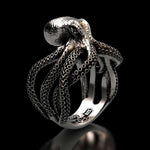 Rings
Rings
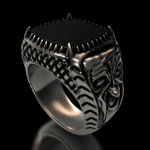 Gemstone Rings
Gemstone Rings
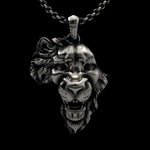 Pendants
Pendants
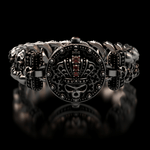 Bracelets
Bracelets
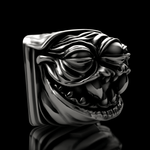 Keycaps
Keycaps
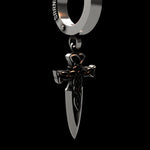 Earrings
Earrings
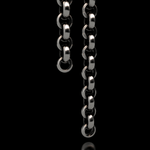 Chains
Chains
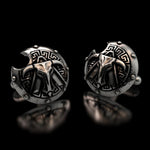 Cufflinks
Cufflinks
 Lapel Pins
Lapel Pins
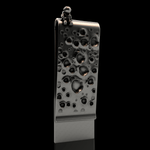 Accessories
Accessories
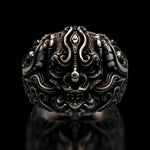 Men’s
Men’s
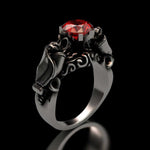 Women’s
Women’s
 Military
Military
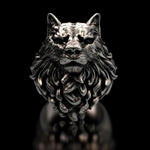 Animal
Animal
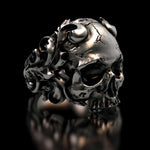 Skull & Biker
Skull & Biker
 Mythology
Mythology
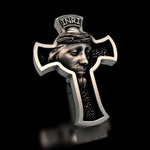 Religious
Religious
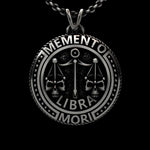 Zodiac
Zodiac
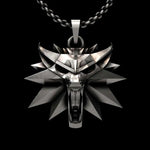 Movie & Game
Movie & Game
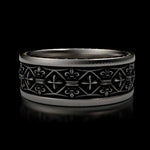 Wedding Band
Wedding Band

